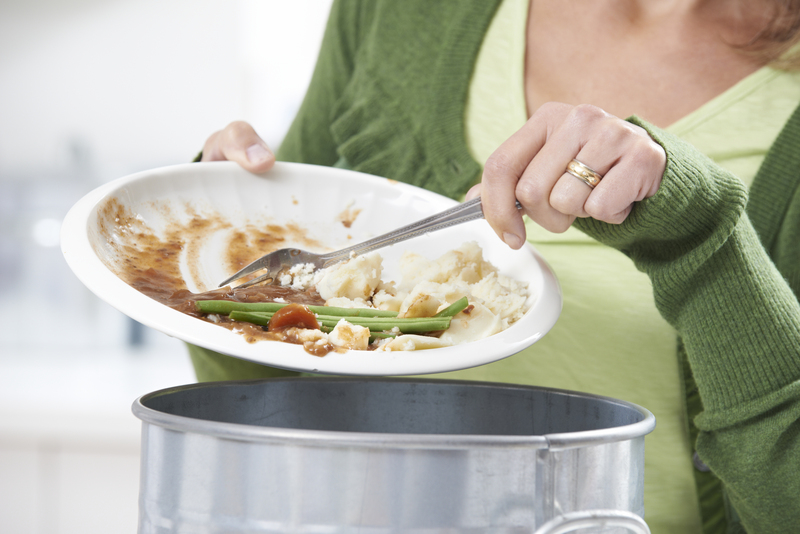From Kitchen Castoffs to Recycled Materials: Pots and Pans Disposal
Wondering what to do with those battered frying pans and old cooking pots cluttering your cabinets? If you've ever remodeled your kitchen, decluttered your shelves, or upgraded your cookware, you've likely faced the dilemma of disposing of pots and pans. Whether they're warped, rusty, or simply outdated, old cookware shouldn't end up in a landfill. Let's explore smart, environmentally friendly, and creative methods for pots and pans disposal that benefit you and the planet.
Why Responsible Pots and Pans Disposal Matters
Our kitchen castoffs represent a real waste concern. Millions of pots and pans are discarded each year, contributing to landfill congestion and environmental strain. These items are often made from valuable and recyclable materials like aluminum, stainless steel, cast iron, and copper. When disposed of properly, they can be transformed into new products, saving energy and reducing the need for virgin materials.
- Metal cookware takes decades to decompose in a landfill.
- Burnt non-stick coatings can leach chemicals if not properly handled.
- Recycling kitchenware supports the circular economy.

Common Types of Pots and Pans: Materials and Concerns
Before deciding how to dispose of your old cookware, it helps to identify what it's made of. Some materials are highly recyclable, while others (like certain nonstick coatings) require special handling. Here's a quick breakdown of common cookware types:
- Stainless Steel Pots and Pans - Durable and widely recyclable.
- Aluminum Cookware - Lightweight; easily recycled, though coated pans may complicate processing.
- Cast Iron Pans - Highly valuable for scrap; can often be restored.
- Copper Pots - Precious as scrap metal, but often lined with other materials.
- Nonstick (Teflon) Pans - The coating limits recycling options; may require special disposal.
- Ceramic-Coated and Enameled Pans - Difficult to recycle via typical curbside programs.
Eco-Friendly Ways to Dispose of Pots and Pans
Kitchenware disposal doesn't have to mean contributing to landfill problems. Here are several practical, sustainable options to keep your old cookware out of the trash:
1. Reuse and Repurpose
Before tossing your old pots and pans, consider if they can be used for other purposes:
- Garden planters: Drill drainage holes and use them for plants or herbs.
- Storage: Organize small items like tools or craft supplies.
- Decor: Antique pans add a rustic charm to your space when hung as wall art.
- Donation: If your pots and pans are still usable, local charities, shelters, or thrift shops might welcome them.
2. Recycling Options for Cookware
Many metals used in cookware are highly recyclable. Here's how to ensure your kitchen castoffs get a new life:
- Check Local Recycling Guidelines: Curbside recycling programs often do not accept cookware, but some municipal recycling centers or metal scrapyards do. Look for drop-off locations or hazardous waste collection days that accept metal cookware disposal.
- Material Separation: Remove any non-metal components (e.g., plastic handles, glass lids, rubber grips) as they may not be accepted.
- Scrap Yards: Most metal scrap yards will happily accept pots and pans, especially stainless steel, aluminum, and cast iron.
- Retailer Take-Back Programs: Some retailers offer recycling programs when you purchase new cookware.
Tip: Use a magnet to test if your pan is steel-based; if it sticks, it's likely stainless steel and ready for most recycling channels.
3. Donating or Selling Usable Kitchenware
If your old pots and pans are still functional, giving them a new home is the most sustainable option of all. Consider:
- Charities and thrift stores - Check donation guidelines first, as some places only accept cookware in good condition.
- Online marketplaces - Try posting on Facebook Marketplace, Craigslist, or Freecycle.
- Community programs - Women's shelters, food pantries, or churches often need basic kitchen supplies.
Special Considerations: Nonstick and Coated Cookware
Why Nonstick Pots and Pans Are Tricky to Recycle
The convenience of nonstick coatings comes with an environmental drawback: these surfaces (often Teflon or similar materials) are made with chemicals that most recycling plants are not equipped to handle. Additionally, scratched or flaking nonstick coatings can release microplastics and toxins.
- Never recycle nonstick cookware curbside unless specifically instructed by your local municipality.
- Check the manufacturer's website; some have take-back programs.
- Look for hazardous waste disposal events in your area.
Removing handles and non-metal parts before recycling will make your cookware more acceptable to scrap yards.
How to Prepare Pots and Pans for Disposal or Recycling
Proper preparation is crucial for effective pots and pans recycling.
- Clean your pans. Rinse away any food residue to prevent contamination at the recycling facility.
- Separate materials. Detach plastic, glass, or rubber parts if possible.
- Check with local authorities about accepted materials and any special instructions.
- Remove nonstick or ceramic coatings if instructed to do so.
Being thorough greatly increases the odds that your old kitchenware will be successfully recycled.
Creative Repurposing: Breathing New Life into Old Cookware
Even if your old pots and pans are beyond kitchen use, they can still be repurposed creatively:
- Wall clocks - Attach clock mechanisms for a quirky kitchen timepiece.
- Bird baths or feeders - Use shallow pans as functional garden decor.
- Lampshades - Upcycle a pasta strainer or saucepan for pendant lighting.
- Organizer trays - Shallow pans make excellent drawer organizers or vanity trays.
Share your repurposed masterpieces online and inspire others to rethink kitchen castoffs!
Frequently Asked Questions About Pots and Pans Disposal
Can I put old pots and pans in my curbside recycling bin?
Usually not. Most curbside programs don't accept cookware due to size, mixed materials, or coatings. Instead, find a specialized metal recycling center or scrap yard.
What if my pans are rusty or damaged?
Rusty, warped, or otherwise unusable metal cookware can still be recycled as scrap metal. Nonstick pans with worn coatings should be handled as hazardous waste where possible.
Are there any cookware brands that will recycle my old pans?
Some manufacturers, such as Tefal or GreenPan, have initiated take-back or recycling programs. Always consult the brand's website for current offerings.
How can I recycle glass lids or plastic handles?
Separate these parts from the pots and pans. Some glass lids may be recyclable with glass, but tempered glass (common in lids) is often not accepted by curbside programs. Plastic handles and knobs typically go in the trash unless there is a specialized recycling service.
Benefits of Recycling Pots and Pans
- Reduces landfill waste and greenhouse gas emissions.
- Saves resources--recycled metal uses up to 95% less energy compared to mining new ore.
- Creates jobs in the recycling and refurbishing industries.
- Supports local charities when usable cookware is donated.
- Promotes a circular economy and reduces demand for new materials.

Tips For Buying Sustainable Cookware
- Choose high-quality, long-lasting pots and pans (e.g., stainless steel, cast iron) to minimize waste.
- Avoid cookware with excessive coatings or mixed materials, which complicate recycling.
- Look for brands offering recycling or trade-in services for when your cookware eventually wears out.
- Research end-of-life options before making a purchase.
Conclusion: A Greener Kitchen Starts With You
Pots and pans disposal is about more than clearing out clutter--it's an opportunity to reduce your environmental footprint and inspire others to do the same. By recycling, donating, or creatively repurposing your kitchen castoffs, you extend the life cycle of valuable resources while keeping waste out of the landfill. Next time you replace your cookware, remember: your choices in the kitchen can make a world of difference for our planet.
Ready to clear out your cabinets responsibly?
Start today--your old frying pan is ready for its next adventure, whether as a garden planter, a new stainless steel product, or a cherished part of someone else's kitchen. Transform your unwanted cookware from kitchen castoffs to recycled materials.
